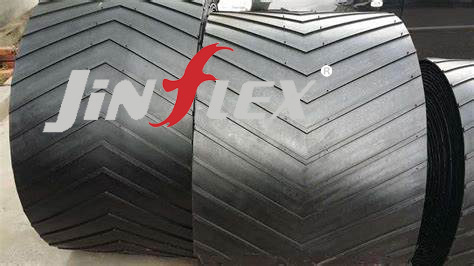Patterned conveyor belts and flame-retardant conveyor belts: Comparison of adaptability ranges
Patterned conveyor belts and flame-retardant conveyor belts are both conveyor belts, but each has its own unique features, especially in terms of scope of application.
Patterned conveyor belts are famous for their carefully designed patterns on their surfaces. These patterns are not only beautiful, but more importantly, they increase the friction between the material and the material, ensuring that the material is stable and reliable during the transportation process. Therefore, patterned conveyor belts play an important role in industries that require high-precision material transmission, such as food, medicine, and packaging.

Flame-retardant conveyor belts focus on ensuring safety performance. Made of special flame-retardant materials and processes, it can prevent the spread of flames to a certain extent, providing effective safety guarantees for high-risk industries such as coal mines, electric power, and chemicals. In flammable materials and high-temperature environments, flame-retardant conveyor belts can significantly reduce fire risks and protect equipment and personnel.

Comparing the two, patterned conveyor belts focus more on stable transmission and precision control of materials, while flame-retardant conveyor belts place more emphasis on ensuring safety performance. The choice of conveyor belt needs to be comprehensively considered based on the specific industry and application scenarios.
In short, patterned conveyor belts shine in industries that pursue transmission stability, while flame-retardant conveyor belts guard production safety in high-risk industries. No matter which one, it is an indispensable and important tool in modern industrial production.










